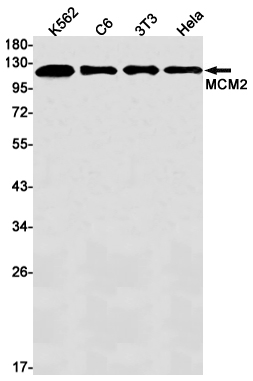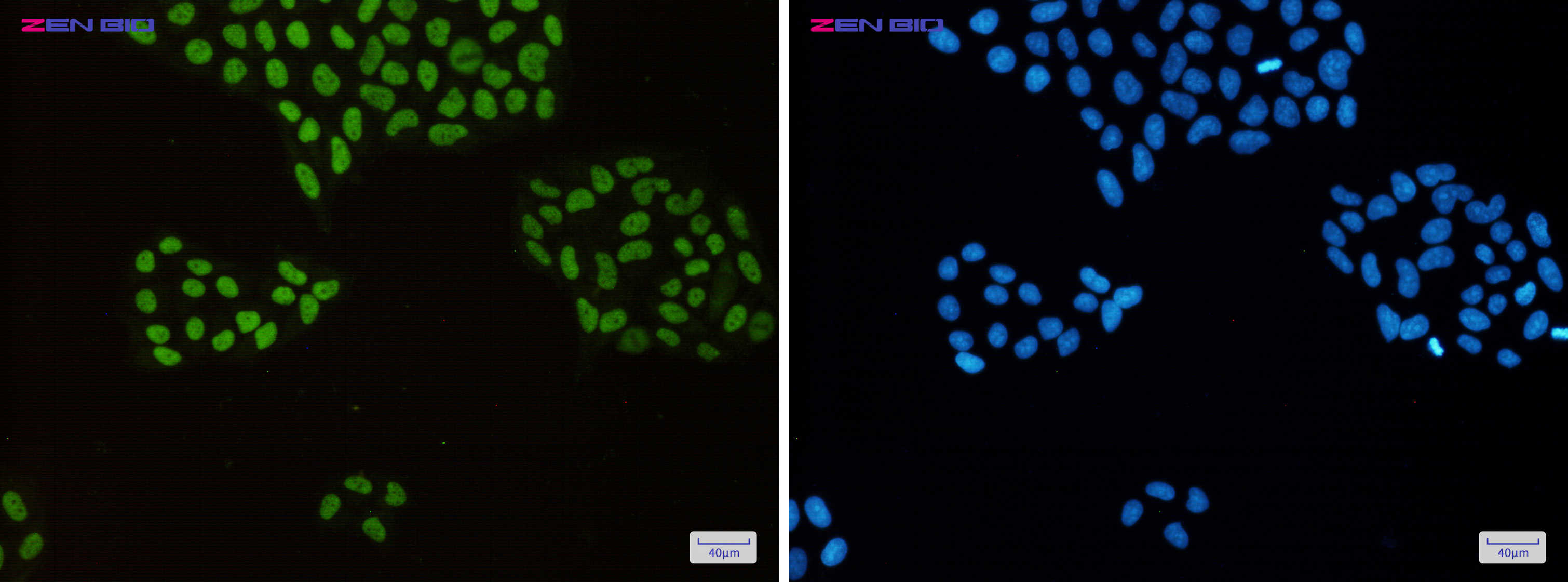-
Product Name
Anti-MCM2 Rabbit antibody
- Documents
-
Description
MCM2 Rabbit monoclonal antibody
-
Tested applications
WB, ICC/IF, FC
-
Species reactivity
Human, Mouse, Rat
-
Alternative names
BM28; CCNL1; CDCL1; cdc19; DFNA70; D3S3194; MITOTIN antibody
-
Isotype
Rabbit IgG
-
Preparation
Antigen: A synthetic peptide of human MCM2
-
Clonality
Monoclonal
-
Formulation
Supplied in 50nM Tris-Glycine(pH 7.4), 0.15M Nacl, 40%Glycerol, 0.01% sodium azide and 0.05% BSA.
-
Storage instructions
Store at 4°C short term. Aliquot and store at -20°C long term. Avoid freeze / thaw cycle.
-
Applications
WB: 1/1000
ICC/IF: 1/200
FC: 1/20
-
Validations

Western blot detection of MCM2 in K562,C6,3T3,Hela cell lysates using MCM2 Rabbit mAb(1:1000 diluted).Predicted band size:102kDa.Observed band size:125kDa.

Immunocytochemistry of MCM2(green) in Hela cells using MCM2 Rabbit mAb at dilution 1/50, and DAPI(blue)
-
Background
Swiss-Prot Acc.P49736.Acts as component of the MCM2-7 complex (MCM complex) which is the putative replicative helicase essential for 'once per cell cycle' DNA replication initiation and elongation in eukaryotic cells. The active ATPase sites in the MCM2-7 ring are formed through the interaction surfaces of two neighboring subunits such that a critical structure of a conserved arginine finger motif is provided in trans relative to the ATP-binding site of the Walker A box of the adjacent subunit. The six ATPase active sites, however, are likely to contribute differentially to the complex helicase activity. Required for the entry in S phase and for cell division. Plays a role in terminally differentiated hair cells development of the cochlea and induces cells apoptosis.
Related Products / Services
Please note: All products are "FOR RESEARCH USE ONLY AND ARE NOT INTENDED FOR DIAGNOSTIC OR THERAPEUTIC USE"
